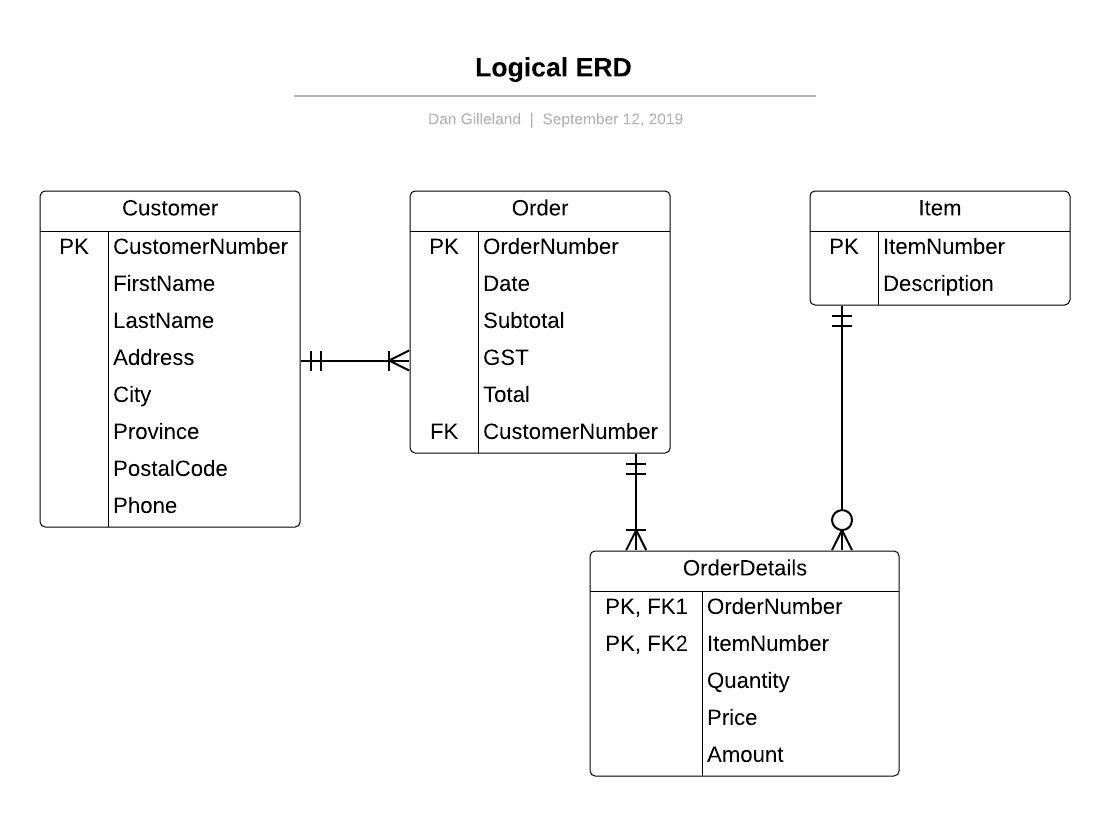Entity Relationship Diagrams (ERDs)
An Entity Relationship Diagram is a picture describing the structure of a database. It is sometimes called a schema (from the word "schematic"). The ERD embodies the metadata of the database, as illustrated in the following image.

At the end of this topic, you should be able to:
- Define the term ERD.
- Identify the parts of an ERD.
- Define the terms Entity, Attribute and Relationships as they relate to databases.
- Describe the difference between atomic and composite attributes
- Describe the difference between stored and derived attributes
- Explain the purpose of a primary key in a database table
- Define the term technical key
- Define the term concatenated key (also known as a composite key)
- Define the term Foreign Key
- Define the term cardinality.
- List the three major types of cardinality.
- Identify primary keys, foreign keys, and indexes on an ERD.
- Identify the cardinality indicated by the relationship lines on an ERD.
- Describe how to translate an Entity Relationship Diagram into English using a template pattern.